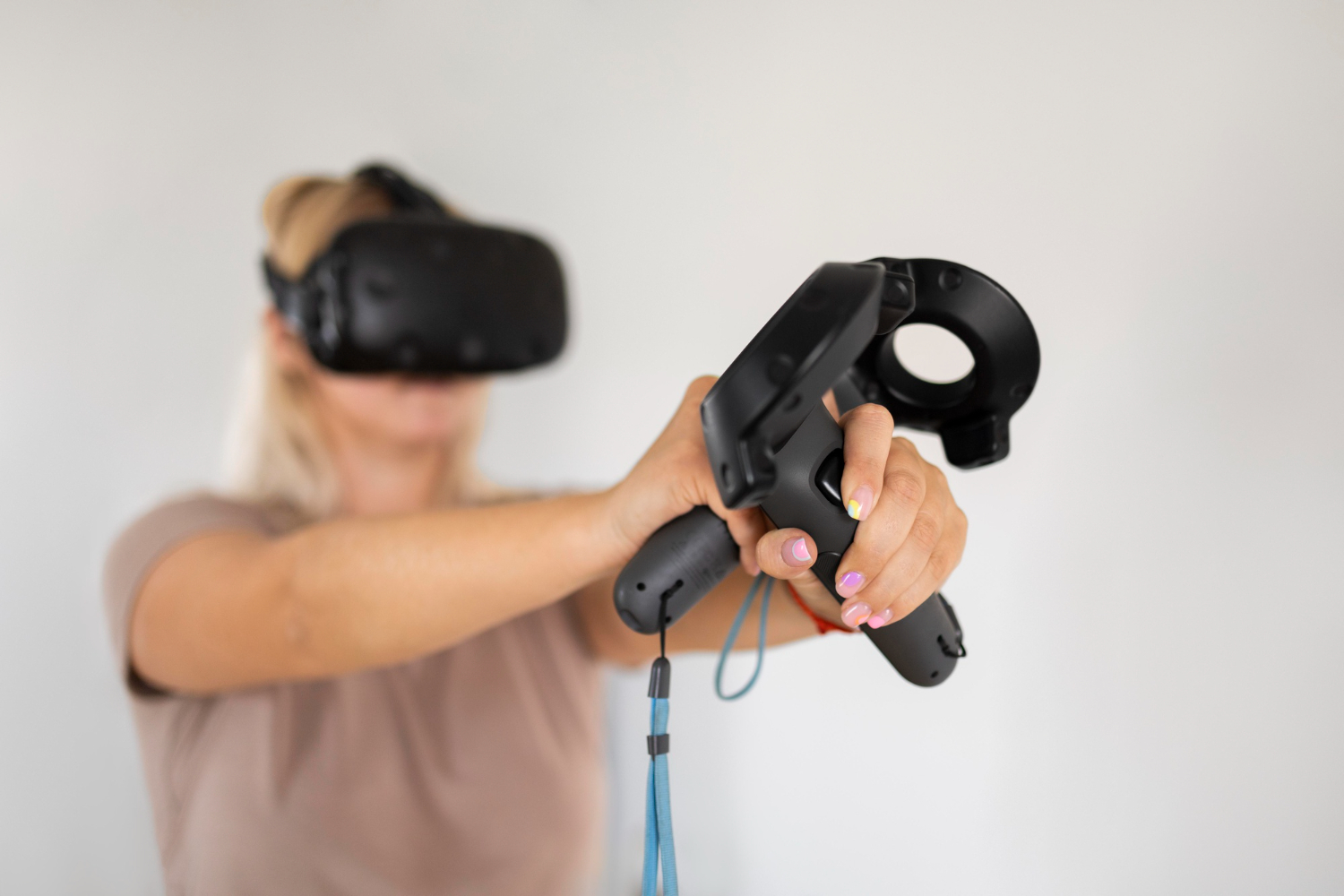In physical therapy, the rehabilitation journey depends not only on the prescribed treatment, but also (and perhaps more crucially) on the patient’s motivation. Staying consistent is no easy task, especially when faced with repetitive and prolonged programs, where the risk of abandonment is always lurking. Today, virtual reality (VR) is redefining the rehabilitation paradigm: it transforms exercise into an immersive, more engaging, more personalized, and more effective experience. And it opens new perspectives in rehabilitative medicine.
What VR in Physical Therapy really means
Virtual reality applied to rehabilitation uses interactive, computer-generated 3D environments. Thanks to headsets and motion sensors, patients become active participants in these environments, interacting with them directly: every movement is tracked and receives immediate feedback. The environment is safe and familiar. Imagine a therapy session where, instead of lifting weights, a patient reaches for objects in a virtual kitchen or walks on uneven terrain, without any risk of falling. This isn’t science fiction; it’s a new chapter in rehabilitative medicine. Devices such as Oculus, CAREN (Computer-Assisted Rehabilitation Environment), or more accessible systems like Wii and Kinect can create realistic simulations that stimulate brain plasticity. A major umbrella review (14 meta-analyses, over 13,000 patients) showed that VR reduces pain and improves balance and joint function in patients with osteoarthritis, low back pain, and fibromyalgia, while also having positive effects on anxiety and overall quality of life.
Balance and Gait: a key application
VR is proving to be a valuable tool in balance and gait rehabilitation. Multiple studies have shown that incorporating “virtual trainers” into rehab programs improves stability, coordination, and walking ability, aspects often compromised in neurological and musculoskeletal conditions such as stroke, Parkinson’s disease, multiple sclerosis, or following orthopedic trauma. The benefits lie in the real-time feedback and the motivational, gamified approach that boosts adherence to the rehabilitation plan.
Cognitive training and memory support
Thanks to the ability to create immersive, interactive environments, VR enables the design of targeted exercises that enhance attention and concentration, such as tasks requiring tracking moving objects or focusing on specific activities.
Among patients with mild cognitive impairment or dementia, VR has improved the ability to recognize and recall information for up to six months after training, with measurable improvements in processing speed lasting up to five years.
Pain management and anxiety reduction
Immersive distraction significantly reduces perceived pain, particularly during wound care or invasive procedures. VR stimulates multiple senses simultaneously (sight, sound, movement), creating a sensory overload that disrupts the transmission of pain signals. Additionally, relaxation and mindfulness exercises can be developed within VR environments, helping to reduce stress and anxiety.
Muscle strengthening and post-surgical rehab
Following fractures, surgeries, or neurological conditions, many patients experience muscle weakness or atrophy, slowing down functional recovery. Virtual trainers allow for the development of personalized programs focused on the most affected muscle groups, with real-time feedback to ensure correct execution. In pediatric rehabilitation, studies on children with cerebral palsy have shown improvements in brain plasticity and behavioral abilities when therapy includes problem-solving tasks.
Motivation and treatment adherence at the core
Low adherence to home-based exercises is one of the primary reasons rehabilitation programs fail. Studies involving elderly and chronic patients show significant improvements in consistency and exercise duration when VR is incorporated.
VR makes exercises more interactive and enjoyable. It also allows for remote monitoring and continuous feedback, keeping patients engaged and enabling adjustments in difficulty to match individual capabilities.
A growing yet underused technology
Despite robust scientific evidence, VR is still not widely adopted in everyday clinical practice. A survey of 658 physical therapists in the United States revealed that only 7% use it regularly. The main barriers are initial setup costs, staff training, and integration into clinical protocols.However, promising signs point to growing momentum: with increasingly affordable kits (some starting from $500-1,000) and expanding tele-rehabilitation programs, VR is gaining ground in rehab centers, driven by patient interest and validated by scientific results.
For further reading
- Bhise S. et al. Use of virtual reality in physical rehabilitation: A narrative review. Current Medicine Research and Practice 14(3):p 122-127, May–Jun 2024.
- Tang P. et al. The Efficacy of Virtual Reality on the Rehabilitation of Musculoskeletal Diseases: Umbrella Review J Med Internet Res 2025;27:e64576
- Felsberg DT. et al. Clinician perspectives on virtual reality use in physical therapy practice in the United States. PLoS One. 2025 Apr 2;20(4):e0320215.
- Bateni H. et al. Use of Virtual Reality in Physical Therapy as an Intervention and Diagnostic Tool. Rehabil Res Pract. 2024 Jan 25;2024:1122286.
